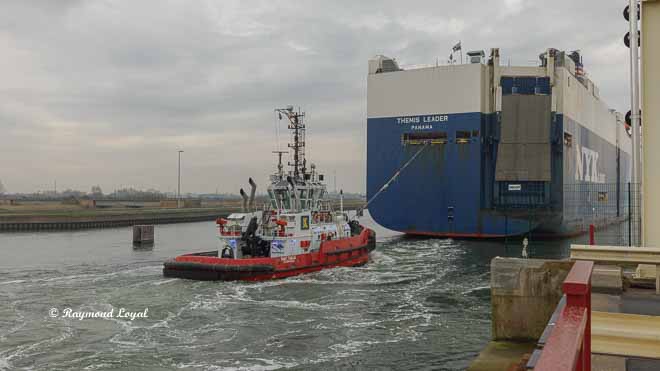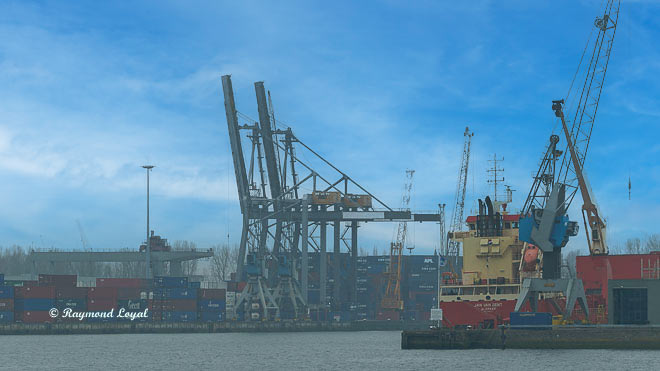Seaport Photography
Seaport photography captures seaports and terminals in motion. The term seaport describes maritime facilities that comprise one or a number of wharves were ocean going ships and inland navigation ships can berth and load and unload goods.
Seaports Editorial Images
What is a Seaport?
Seaports are ports or harbours that provide berthing capacities to ocean going ships as well as to inland navigation ships and are accessible by sea either directly or by way of locks or canals or upstream by using rivers. Sea ports are connected to the so-called hinterland by different modes of transport which are inland navigation, rail or road.
Port of Zeebrugge
The Port of Zeebrugge is the port of the city of Bruges (Brugge). Zeebrugge is a modern seaport and the second largest port in Belgium. The Port of Zeebrugge has very good connections to the hinterland and is accessible by inland navigation, rail and road. Zeebrugges hinterland connections provides intra-European and intercontinental services which make Zeebrugge a big player in the European transport market.
The Port of Zeebrugge is the port of the city of Bruges (Brugge). Zeebrugge is a modern seaport and the second largest port in Belgium. The Port of Zeebrugge has very good connections to the hinterland and is accessible by inland navigation, rail and road. Zeebrugges hinterland connections provides intra-European and intercontinental services which make Zeebrugge a big player in the European transport market.
Zeebrugge is a large container port serving container lanes to all continents. Also, in Zeebrugge bulk cargo is handled and shipped. On top of that Zeebrugge is on of the world's foremost roll-on/roll-off ports, transshipping 45.8 million tons of goods in 2019.
The port of Zeebrugge also focusses on conventional cargo, LNG (=liquified natural gas), cars, heavy loads and cruises.
As with cars, Zeebrugge is handling about 2.9 million units per annum making it one of the main car-handling ports in the world.
Zeebrugge also handles perishable food cargo.
According to the Port of Zeebrugge's own information the break-up of the goods handled annually is as follows
- RoRo goods = 36%
- Containers = 40%
- Liquid Bulk = 16%
- Solid Bulk = 6%
- Breakbulk = 2%
As with cars, the Port of Zeebrugge is a main hub for the import and export of cars. Annually about 1.5 million vehicle units are being handled each in import and export as well. The success of the Zeebrugge vehicle business is visible by the large vehicle transport vessels arriving and sailing every day.
Zeebrugge is both a ferry port and also hosts an cruise terminal.
Below shows one of the quays with hundreds of containers waiting to be transshipped.
Port of Zeebrugge Lockage
Below shows the lock at the Port of Zeebrugge connecting the outer wharves with Budewijnkanal, the Car Terminals and the perishable goods terminals.
The following images shows tugs guiding the large vehicle carriers through the locks.


Cruise Terminal Zeebrugge
The below image shows the Zeebrugge cruise terminal with two large cruise liners at berth.

Port of Rotterdam
Port of Rotterdam (NLRTM) ist the largest seaport in Europe. Moreover, Rotterdam is the larges deep water port in Europe. In 2018 container handling in Rotterdam reached 14.5 million TEU (Info as per Port of Rotterdam). With regard to cargo, Rotterdam can handle dry bulk, wet bulk, containers and RoRo. As is the case with all large sea ports, Rotterdam is an ISPS secured port.
The Port of Rotterdam also hosts a large cruise terminal, the Cruise Port Rotterdam.
The largest terminals at Port of Rotterdam are:
- Maasflakte
- Europort (Petrochemie)
- Botlek Tank Terminal BTT (Tank Terminal)
- Hartel Tank Terminal (HTT)
- Euromax Terminal
- Waalhaven
- Maashaven
The Port of Rotterdam manages a ferry link between Rotterdam and Hull in the UK.
The maximum draught Rotterdam can handle is 22.55 metres.
Waalhaven - Port of Rotterdam
Below: A container bridge in motion. One can see a container being lowered down into an empty container slot on the vessel. Location: Waalhaven Port of Rotterdam.
Below shows two container bridges at Waalhaven Terminal (Port of Rotterdam). One container bridge sits idle because the spreader is hinged up while the other bridge is fully operational. At berth lies a container barge being loaded with containers for the inland ports.
The on-carriage of containers by container barge is the most cost-effective way of shipping containers to the recipients. Along the river Rhine there are quite a number of inland ports where containers can be transshipped. From Rotterdam containers can go by barge down to Basle and also over the Danube to destinations much further away.










